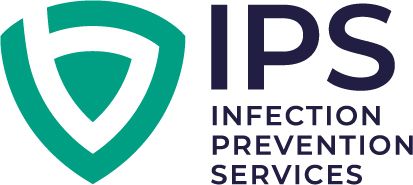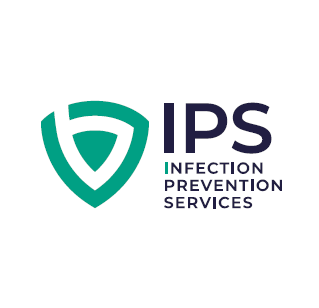Apr 4
The Vital Role Of IPC Surveillance In Age Care

Introduction
Surveillance is a critical component of good IPC practice. It ensures safety in the aged-care setting, especially for the vulnerable populations of older adults residing in these facilities. This involves close observation of residents to detect any early signs of infection, maintaining alertness for these signs, making systematic observations, and taking appropriate action when indicated. For specific diseases in a facility, surveillance requires continued watchfulness over the distribution and incidences of each disease, obtaining a baseline for that disease in the facility, (benchmark), to assess trends. Surveillance also extends to trends in the development of MRO/MRDOs, which is critical in healthcare today. A baseline requires systematic collection, consolidation, and evaluation of morbidity and mortality reports, with regular reporting of data and evaluation of these results. Surveillance can detect clusters of importance, the results of which can be used within the facility or the wider public health arena. In healthcare-associated infections (HAIs), surveillance includes systematic observation and data collection with reproducible and objective definitions, consolidation, and dissemination of the data with evaluation for changes in IPC within the facility. This often involves measuring processes such as hand hygiene compliance and clinical outcomes, for example, the incidences of HAIs and MRO/MRDOs. Data can also be used in the development of policies and procedures and affect decision-making processes within the facility.
Why is IPC Surveillance so Vital?
IPC surveillance is especially vital due to the significant risks that infections pose, particularly to vulnerable populations. Older individuals in residential aged care facilities (ACFs) have a heightened susceptibility to acquiring various infections, including influenza, gastroenteritis, and COVID-19, which can lead to increased morbidity and mortality. The COVID-19 pandemic strongly highlighted this vulnerability and emphasised the supreme importance of robust IPC measures. Effective IPC is fundamental to ensuring the provision of high-quality care and fostering a safe environment for both residents and the workforce in an ACF. Many HAIs are preventable and costly and the increasing problem of MRO/MRDO also requires a strong AMS program. Furthermore, surveillance data can help identify if the standard public health measures, effective in the broader community, may not provide sufficient protection in aged care settings, necessitating more intensive and tailored IPC strategies to be adopted.
Objectives of IPC Surveillance
The fundamental purpose of IPC surveillance is to measure the burden of HAIs and MRO/MRDOs and act for the prevention of infection and its consequences. Surveillance serves many key functions:
- To detect early signs of infection in residents and identify potential infection outcomes, including the incidence of MRO/MRDOs within facilities.
- To understand the extent of these problems and the underlying factors contributing to their occurrence. This includes identifying patterns of transmission of disease.
- To assess compliance with IPC measures, such as hand hygiene.
- To assess outcome measures, such as HAIs. Evidence shows that the process can lead to a significant reduction in HAIs.
- To provide timely feedback about infection prevention issues to decrease the burden of infection on residents and staff.
- To use the data to guide and prioritise IPC strategies, both the development and implementation of targeted practices, aimed at reducing the rate and spread of infections.
- To monitor the quality of care provided.
- To inform the development and implementation of infection control strategies.
- To improve the understanding of the spread of infections with an ACF. Surveillance data assists in understanding the current infection rates and the impact of infections within the facility. This has been recently experienced with the COVID-19 pandemic.

Common Infections Monitored
While COVID-19 has been a major focus recently, aged care facilities routinely monitor for a range of other common infections. These include:
- Influenza
- Gastroenteritis (often caused by viruses like norovirus)
- Urinary Tract Infections (UTIs)
- Medical device-associated infections
- Infections caused by multidrug-resistant organisms
- Respiratory syncytial virus (RSV)
A study in Melbourne RACFs from 2006-2010 found that the most common healthcare-associated infections (HAIs) were urinary tract infections, lower respiratory tract infections, skin and soft tissue infections, and eye infections.
The McGeer Criteria is a set of clinical and other criteria intended specifically for use in aged care and other long-term care facilities for defining infections. These criteria provide objective and reproducible definitions for various infectious diseases, which are crucial for consistent surveillance. These diseases covered include:
The McGeer Criteria is a set of clinical and other criteria intended specifically for use in aged care and other long-term care facilities for defining infections. These criteria provide objective and reproducible definitions for various infectious diseases, which are crucial for consistent surveillance. These diseases covered include:
- Urinary Tract Infection (UTI)
- Respiratory Tract Infection (RTI), including common cold/pharyngitis, influenza-like illness, pneumonia, bronchitis/tracheobronchitis
- Skin and Soft Tissue Infection (SSTI), including cellulitis/wound infection, scabies, oral candidiasis, fungal skin infection, herpes simplex/zoster, conjunctivitis
- Gastrointestinal Tract Infection (GITI), including gastroenteritis, norovirus gastroenteritis, Clostridium difficile infection
These definitions typically require a combination of clinical signs and symptoms (constitutional and site-specific) and sometimes microbiological analysis to be met. For instance, the McGeer criteria for UTI without an indwelling catheter requires at least one sign or symptom (like dysuria or new incontinence) AND a specific level of colony-forming units of organisms in a urine sample.
The McGeer criteria have been widely accepted as an epidemiological tool for comparing infection rates across different facilities. A study analysing infection burden in Melbourne aged care facilities used these criteria to identify and validate HAI episodes. However, it's important to note that these are surveillance definitions and antimicrobial use in patients not meeting these criteria may not always be inappropriate from a clinical perspective.
The McGeer criteria have been widely accepted as an epidemiological tool for comparing infection rates across different facilities. A study analysing infection burden in Melbourne aged care facilities used these criteria to identify and validate HAI episodes. However, it's important to note that these are surveillance definitions and antimicrobial use in patients not meeting these criteria may not always be inappropriate from a clinical perspective.
Using Data to Improve Outcomes
The data collected through IPC surveillance is crucial for driving quality improvement and advancing infection control strategies. By consistently monitoring infection rates, facilities can gain insights into potential issues related to the spread of infections. Analysing surveillance data helps identify patterns of transmission and trends in infection rates, which is essential for developing targeted interventions. For example, monitoring UTI rates can lead to audits of some IPC practices in the facility and the implementation of targeted improvement strategies, like additional staff training. The true benefit of surveillance is realised when it is directly integrated with a proactive prevention strategy and a commitment to continuous quality improvement.

Regulatory Framework in Australia
In Australian aged care, IPC surveillance encompasses examining infection rate data, common infections monitored, the regulatory framework, specific surveillance requirements, and mandatory reporting obligations. The Aged Care Quality Standards serve as the cornerstone, including requirements related to safe and quality care, inherently encompassing IPC. The Australian Guidelines for the Prevention and Control of Infection in Healthcare provide a national approach to IPC, supplemented by the Aged Care Infection Prevention and Control Guide for specific advice in aged care.
Mandatory Reporting Obligations
Australian aged care facilities have specific mandatory reporting obligations related to IPC. These include:
- Reporting details of the Infection Prevention and Control (IPC) Lead.
- Reporting COVID-19 outbreaks.
- Annual reporting on influenza vaccinations for staff and residents.
- Participation in the National Aged Care Mandatory Quality Indicator Program (QI Program), which includes indicators related to infections (e.g., hospitalisations, infected incontinence-associated dermatitis).
- The National Infection Surveillance Program for Aged Care (NISPAC) is under development and is expected to establish a national, standardised infection surveillance system, potentially expanding mandatory reporting in the future.
The Victorian ACIIP: A Case Study
The Victorian Healthcare Associated Infection Surveillance System (VICNISS) and the Coordinating Centre Aged Care Infection Indicator Program (ACIIP) are state-wide programs for public residential aged care services in Victoria. This program monitors significant organism infections, staff vaccination, and resident vaccination. An evaluation of ACIIP found it to be a useful program appreciated by users for improving local practice. This program is seen as a precursor to the national NISPAC.
Challenges and the Role of Automation
While IPC surveillance is vital, it can be resource-intensive. The increasing use of Electronic Health Records (EHRs) presents opportunities for automation of some surveillance processes, potentially improving accuracy, reliability, and reproducibility. Automation can be fully or partially implemented, depending on how the organisation is run. The benefits of automation include potential time savings, increased accuracy, and improved efficiency. However, challenges remain, including data quality, EHR data structure, and the need for ongoing validation and updates.
Conclusion
Robust IPC surveillance is indispensable for safeguarding the health and well-being of aged care residents. By systematically monitoring infections, utilising standardised definitions like the McGeer criteria, adhering to regulatory frameworks, and applying data for quality improvement, aged care facilities can create a safer environment for their vulnerable residents. Ongoing developments like NISPAC and advancements in surveillance automation hold the promise of further strengthening IPC practices in this critical sector of healthcare.
Point to Ponder
In the States, Territories and the DHBs of Australia and New Zealand, there is no general agreement as to what constitutes an infection. Some use the McGeer Criteria, some don’t, others use their own criteria. It is difficult therefore, to apply surveillance data consistently on a national level in either country.
Explore IPC Surveillance further with the HUB and our extensive library of information courses and other blogs.
💡 For more insights on IPC surveillance and best practices, explore our extensive IPS library of training courses and resources.
Visit the HUB for more IPC insights
💡 For more insights on IPC surveillance and best practices, explore our extensive IPS library of training courses and resources.
Visit the HUB for more IPC insights
Lyndon Forrest
Managing Director | CEO
I am a passionate and visionary leader who has been working in the field of infection prevention and control in aged care for almost 30 years. I am one of the co-founders and the current Managing Director and CEO of Bug Control New Zealand and Australia, the premium provider of infection prevention and control services in aged care. I lead a team that is driven by a common purpose: to help aged care leaders and staff protect their residents from infections and create a healthier future for them.
I am building a business that focuses on our clients and solving their problems. We are focused on building a world-class service in aged care. We focus on being better, not bigger, which means anything we do is for our clients.
I am a passionate and visionary leader who has been working in the field of infection prevention and control in aged care for almost 30 years. I am one of the co-founders and the current Managing Director and CEO of Bug Control New Zealand and Australia, the premium provider of infection prevention and control services in aged care. I lead a team that is driven by a common purpose: to help aged care leaders and staff protect their residents from infections and create a healthier future for them.
I am building a business that focuses on our clients and solving their problems. We are focused on building a world-class service in aged care. We focus on being better, not bigger, which means anything we do is for our clients.
Erica Callaghan
Marketing Manager
Erica Callaghan is a dedicated professional with a rich background in agriculture and nutrient management. Growing up on her family's farm in Mid Canterbury, she developed a deep passion for farming. She currently resides on her partner's arable property in South Canterbury.
In 2017, Erica joined the Farm Sustainability team, focusing on nutrient management and environmental stewardship. In February 2024, she became the Manager of Marketing and Sales at Bug Control New Zealand - Infection Prevention Services, where her passion now includes improving infection prevention outcomes.
Outside of work, Erica loves cooking and traveling, often combining her culinary interests with her explorations in Italy and Vietnam. She enjoys entertaining family and friends and remains actively involved in farm activities, especially during harvest season.
Erica Callaghan is a dedicated professional with a rich background in agriculture and nutrient management. Growing up on her family's farm in Mid Canterbury, she developed a deep passion for farming. She currently resides on her partner's arable property in South Canterbury.
In 2017, Erica joined the Farm Sustainability team, focusing on nutrient management and environmental stewardship. In February 2024, she became the Manager of Marketing and Sales at Bug Control New Zealand - Infection Prevention Services, where her passion now includes improving infection prevention outcomes.
Outside of work, Erica loves cooking and traveling, often combining her culinary interests with her explorations in Italy and Vietnam. She enjoys entertaining family and friends and remains actively involved in farm activities, especially during harvest season.
Toni Sherriff
Clinical Nurse Specialist
Toni is a Registered Nurse with extensive experience in Infection Prevention and Control. Her career began as a kitchen hand and caregiver in Aged Care facilities, followed by earning a Bachelor of Nursing.
Toni has significant experience, having worked in Brisbane’s Infectious Diseases ward before returning home to New Zealand, where she continued her career as a Clinical Nurse Specialist in Infection Prevention and Control within Te Whatu Ora (Health NZ).
Toni brings her expertise and dedication to our team, which is instrumental in providing top-tier infection prevention solutions to our clients.
Toni is a Registered Nurse with extensive experience in Infection Prevention and Control. Her career began as a kitchen hand and caregiver in Aged Care facilities, followed by earning a Bachelor of Nursing.
Toni has significant experience, having worked in Brisbane’s Infectious Diseases ward before returning home to New Zealand, where she continued her career as a Clinical Nurse Specialist in Infection Prevention and Control within Te Whatu Ora (Health NZ).
Toni brings her expertise and dedication to our team, which is instrumental in providing top-tier infection prevention solutions to our clients.
Julie Hadfield
Accounts & Payroll
Julie is experienced in Accounts & Payroll Administration & after a long career in both the Financial & Local Government Sectors, is now working with our team. Julie brings her strong time management & organisational skills to our team, which is important to keep the company running in the background to enable the rest of our team to provide top notch service to all of our clients.
Julie is experienced in Accounts & Payroll Administration & after a long career in both the Financial & Local Government Sectors, is now working with our team. Julie brings her strong time management & organisational skills to our team, which is important to keep the company running in the background to enable the rest of our team to provide top notch service to all of our clients.
Andrea Murray
Content Editor
I attended Otago University in NZ and graduated as a Dental Surgeon. After 40 years in the profession, I retired in 2022. Infection prevention knowledge was part of everyday practice, dealing with sterilisation, hand hygiene, and cleaning.
Before retiring, I began doing some editing and proofreading for Bug Control as I am interested in the subject and in the English language. During the COVID-19 lockdown, I attended the ACIPC course "Introduction to Infection Prevention and Control", which increased my interest in the subject. I now work part-time as the Content Editor for the company.
I attended Otago University in NZ and graduated as a Dental Surgeon. After 40 years in the profession, I retired in 2022. Infection prevention knowledge was part of everyday practice, dealing with sterilisation, hand hygiene, and cleaning.
Before retiring, I began doing some editing and proofreading for Bug Control as I am interested in the subject and in the English language. During the COVID-19 lockdown, I attended the ACIPC course "Introduction to Infection Prevention and Control", which increased my interest in the subject. I now work part-time as the Content Editor for the company.
Personally, I lived in the UK for 10 years. My two children were born in Scotland, and now both are living in Europe, one in Amsterdam, Netherlands, and the other in Edinburgh, Scotland. I live close to Fairlie on the South Island of NZ, a beautiful part of the country, and I love being out of the city.
Princess
Customer Support
Princess began her career as a dedicated Customer Service Representative, honing her communication and problem-solving skills. She later transitioned into a Literary Specialist role, where she developed a keen eye for detail. Her journey then led her to a Sales Specialist position, where she excelled in client relations.
Now, as a Customer Support professional in Infection Prevention Services. Princess focuses on ensuring customer satisfaction, building loyalty, and enhancing the overall customer journey.
Princess began her career as a dedicated Customer Service Representative, honing her communication and problem-solving skills. She later transitioned into a Literary Specialist role, where she developed a keen eye for detail. Her journey then led her to a Sales Specialist position, where she excelled in client relations.
Now, as a Customer Support professional in Infection Prevention Services. Princess focuses on ensuring customer satisfaction, building loyalty, and enhancing the overall customer journey.
Dianne Newey
Senior Infection Prevention and Control Consultant
With over 35 years of experience as a Registered Nurse, I'm now applying all my experience and skills as a Senior Infection Prevention and Control Consultant with Bug Control Infection Prevention Advisory Services.
This is through IP&C education, IP&C environmental audits and reports, IP&C policy and procedure review and development and consultancy on infection prevention and control issues. When I’m not working, I spend time with my family and in my garden, where I grow all my own veggies.
With over 35 years of experience as a Registered Nurse, I'm now applying all my experience and skills as a Senior Infection Prevention and Control Consultant with Bug Control Infection Prevention Advisory Services.
In my role, I promote Infection Prevention and Control, to RACF's and disability support services.
This is through IP&C education, IP&C environmental audits and reports, IP&C policy and procedure review and development and consultancy on infection prevention and control issues. When I’m not working, I spend time with my family and in my garden, where I grow all my own veggies.
Caoimhe (Keva) Stewart
Clinical & Business Operations Manager
Caoimhe is the Manager of Customer Service at Bug Control | Infection Prevention Services, where she ensures that learners have a seamless and supportive experience. With her previous experience as a Registered Nurse in both the UK and Australia, Caoimhe brings a deep understanding of healthcare to her role. Before joining Bug Control IPS Services, she worked in a variety of nursing settings, including Occupational Health, Palliative Care, and Community Nursing, providing her with the ability to empathise with learners and understand the challenges they face.
Caoimhe is the Manager of Customer Service at Bug Control | Infection Prevention Services, where she ensures that learners have a seamless and supportive experience. With her previous experience as a Registered Nurse in both the UK and Australia, Caoimhe brings a deep understanding of healthcare to her role. Before joining Bug Control IPS Services, she worked in a variety of nursing settings, including Occupational Health, Palliative Care, and Community Nursing, providing her with the ability to empathise with learners and understand the challenges they face.
Her move from nursing to customer service was driven by her passion for helping others, not just in clinical settings but also in ensuring that people have access to the resources and support they need. Now, Caoimhe applies her problem-solving skills, attention to detail, and communication expertise to her role, helping to create a positive and effective learning environment for all students.
Outside of work, Caoimhe enjoys travelling, staying active, and catching up with friends on the weekends. Whether in healthcare or customer service, she’s dedicated to making a meaningful difference and supporting people in their personal and professional growth.
Bridgette Mackie
Clinical Nurse Educator
Bridgette is an experienced New Zealand Registered Nurse, qualified Healthcare Auditor, and Healthcare Educator with a strong background in clinical quality, competency assessment, and infection prevention. She has led large-scale OSCE and CAP training programmes for internationally qualified nurses, developed sector-specific educational resources, and coordinated HealthCERT audit preparation in the surgical sector.
Known for her engaging teaching style and genuine passion for supporting learners, Bridgette excels at making complex topics accessible and relevant. She blends operational leadership with a deep commitment to professional development and safe, effective practice.
Bridgette is an experienced New Zealand Registered Nurse, qualified Healthcare Auditor, and Healthcare Educator with a strong background in clinical quality, competency assessment, and infection prevention. She has led large-scale OSCE and CAP training programmes for internationally qualified nurses, developed sector-specific educational resources, and coordinated HealthCERT audit preparation in the surgical sector.
Known for her engaging teaching style and genuine passion for supporting learners, Bridgette excels at making complex topics accessible and relevant. She blends operational leadership with a deep commitment to professional development and safe, effective practice.

